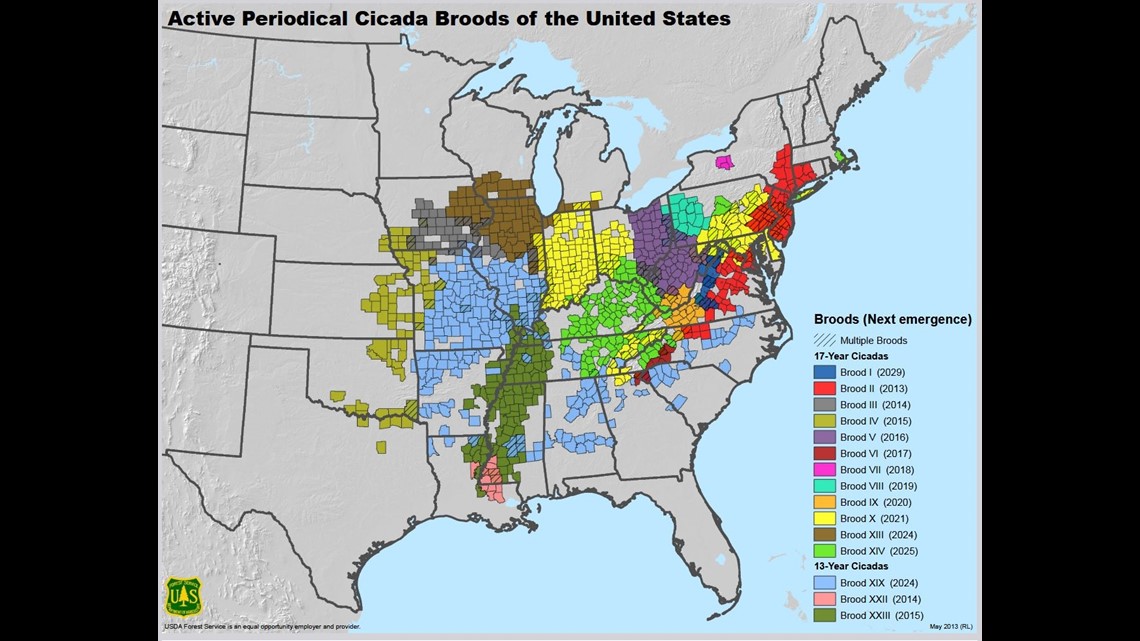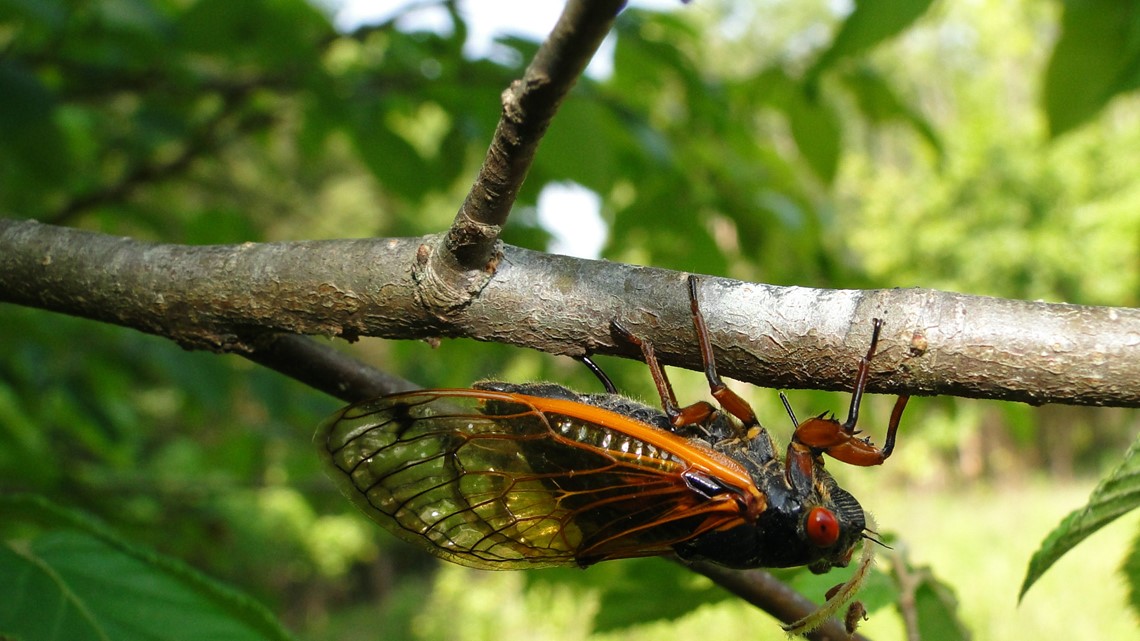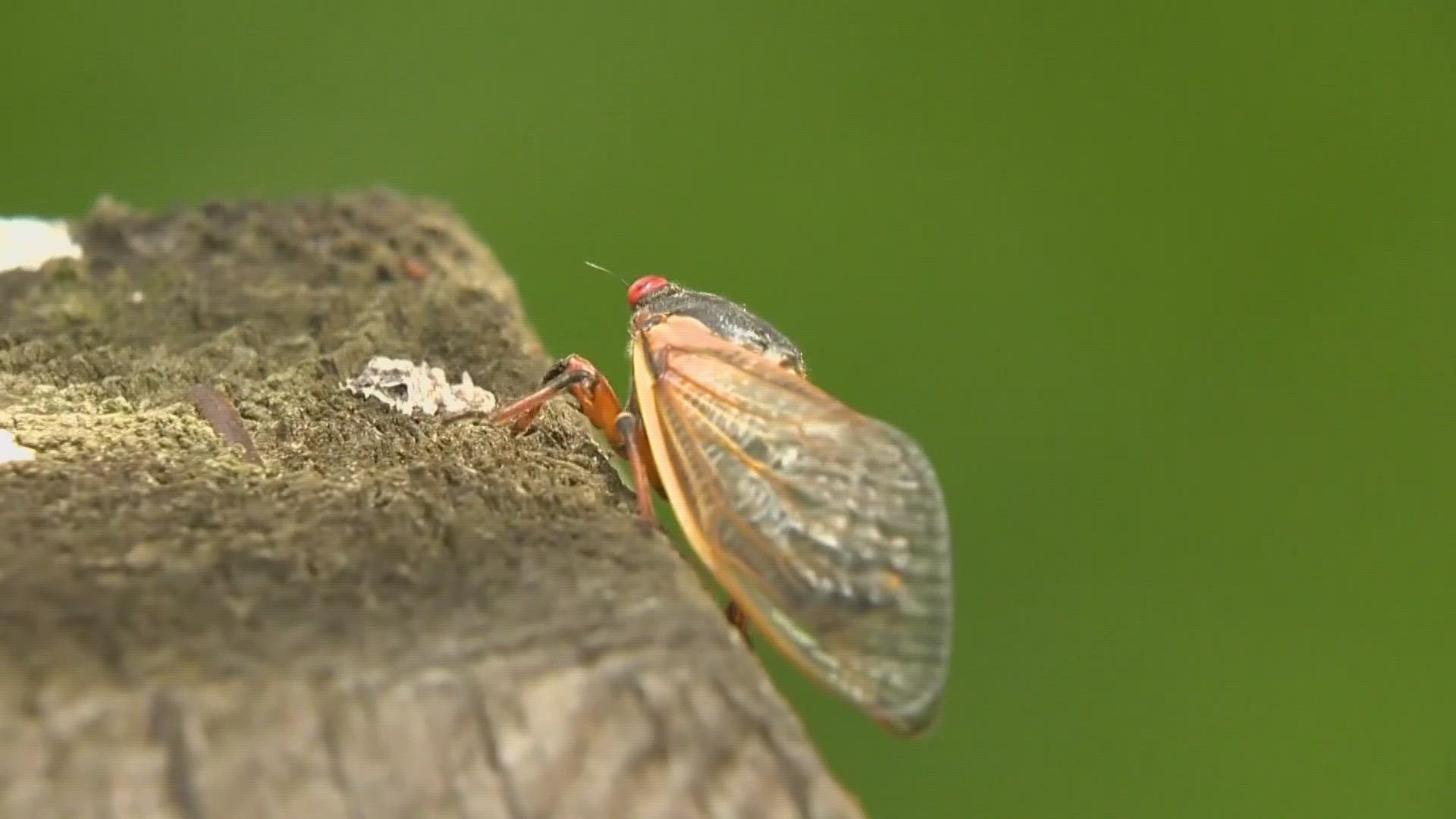NORTH CAROLINA, USA — It's only a matter of days before trillions of periodical cicadas emerge from the ground across much of North Carolina. You won't be able to miss them with their loud sounds.
They're part of Brood XIX, a periodical cicada that's only seen every 13 years, according to Clyde Sorenson, professor of Entomology at NC State University.
Their numbers will be so large that you can expect to see a million cicadas per acre, University of Connecticut cicada expert John Cooley said. Sorenson said cicadas like hardwood forest ecosystems and will be widespread across more than a dozen North Carolina counties.
Where can we expect to see cicadas?
Most of the counties are in the Triangle region of the state. They include Wake, Durham, Orange, Chatham, Northhampton, Halifax, Warren, and Franklin counties.
In the Piedmont Triad, people living in Alamance and Randolph counties will also see trillions of the Brood XIX cicadas emerge this month.
Further south and west, Mecklenburg, Cabarrus, Robeson, and Iredell counties will also see large numbers.


Why only certain parts of the state?
According to Sorenson, the map is patchy because of colonization and land use. The insects are most prevalent in wooded areas that have been around for a very long time, which could include backyard areas. The insects typically don't disperse more than a mile from where they came up, so they don't spread too much, Sorenson said.
Most counties in the Piedmont Triad area won't see this specific type of cicada because, according to Sorenson, that area is dominated by Brood II of the 17-year cicadas. He added that the next time the Piedmont Triad will see an emergence will be in 2030, 17 years after the last emergence in 2013.
Brood XIX cicadas look different than other cicadas. Sorenson said these cicadas are orange and black with brilliant red eyes. They're only found in the eastern United States.
Why so many cicadas?
University of Connecticut cicada expert John Cooley said the number of cicadas will be so large that you can expect to see a million cicadas per acre.
He added the origin of some of the astronomical cicada numbers can likely be traced to evolution. There are too many for them to be eaten to extinction.


When will this happen?
It can only happen once the ground temperature reaches 64 degrees. Sorenson said it'll happen quickly and will look like someone used a shotgun to shoot holes in your yard.
He said we can expect the emergence to start before the end of this month. Bigger numbers of the insects will start to emerge in the couple of days following the first glimpse of them. According to Sorenson, they'll peak around May 10 and will be gone by June 1.
Are cicadas around every summer?
You're correct. According to Sorenson, annual cicadas emerge yearly but later in the summer. They're typically green and white.
There are about 15 species of annual cicadas, Sorenson said.
Are they destructive to property?
Experts said cicadas can cause problems for young trees and nurseries when their mating and nesting weigh down and break branches. However, they only last about a month above ground, and no, they aren't dangerous.
Unlike locusts, which eat plants, cicadas get their nutrients from small branches. Most trees, however, will remain unharmed.


If you see a periodic cicada outside the counties listed above, experts want to hear about it! Email sorenson@ncsu.edu and the North Carolina Natural Heritage Program a picture of the insect and its location.

